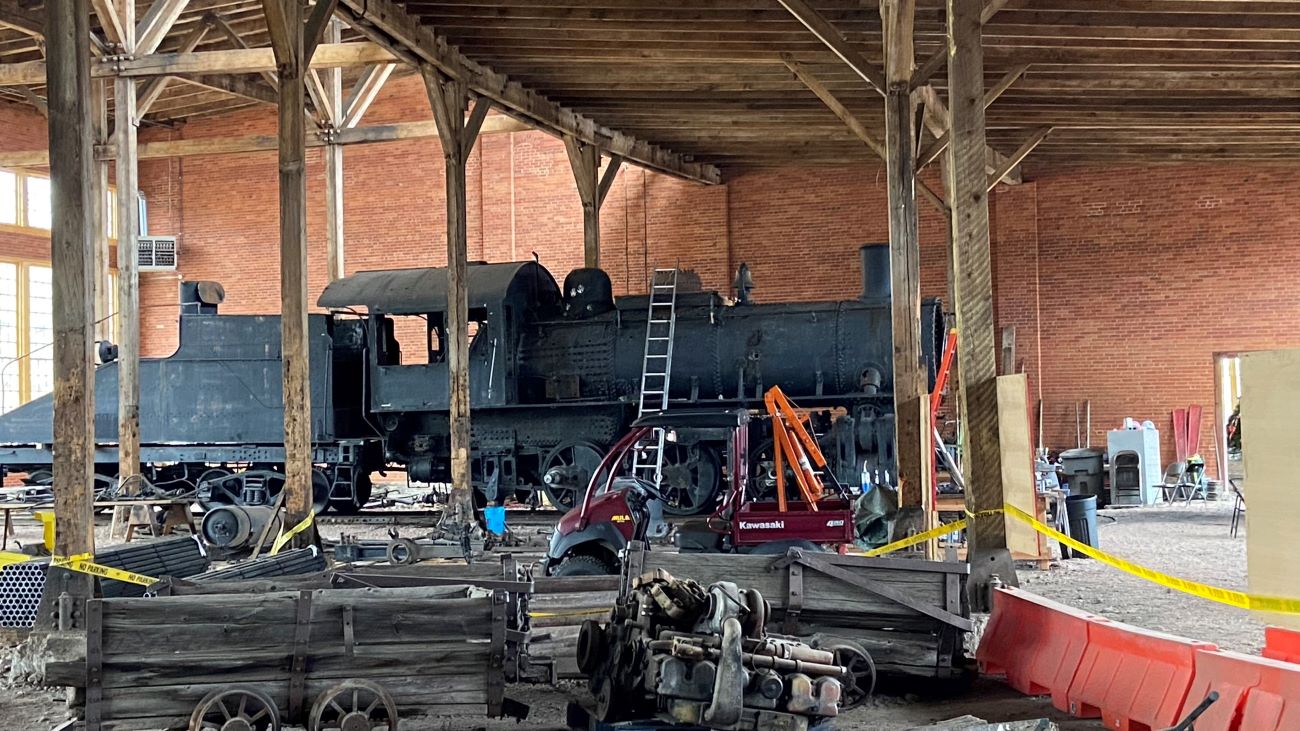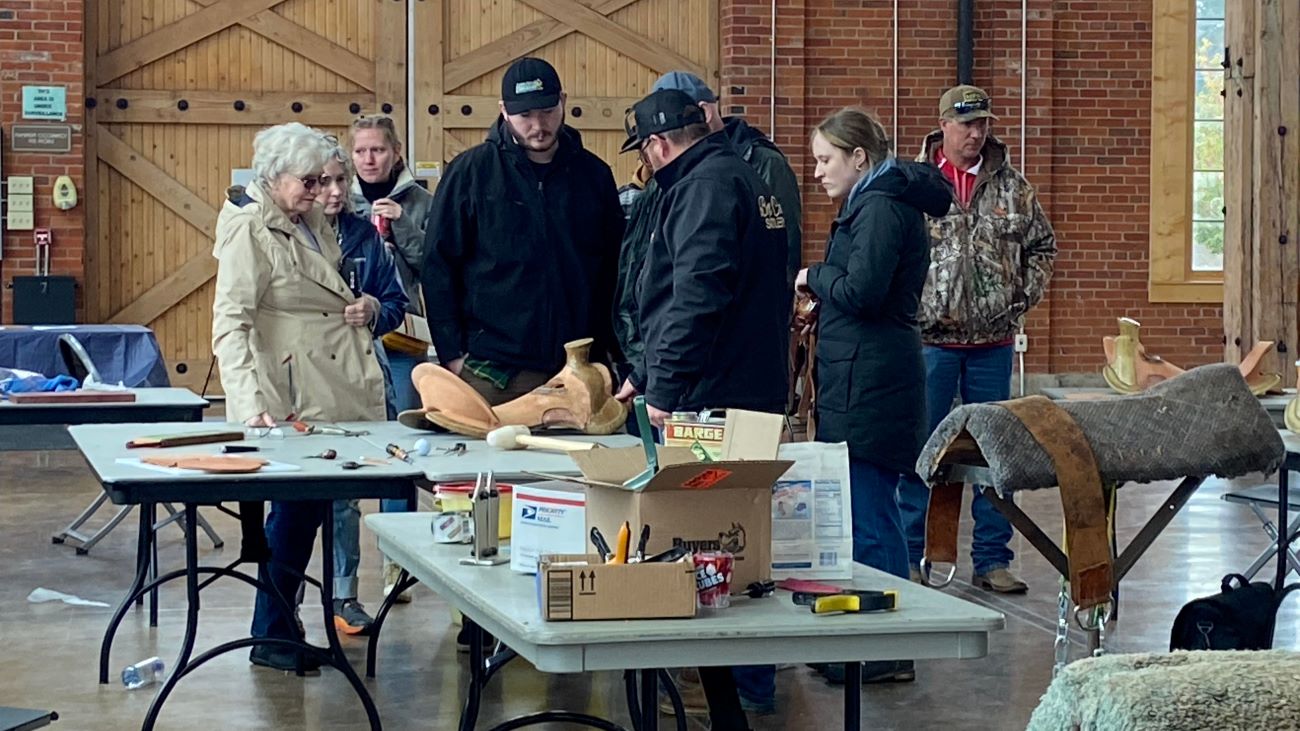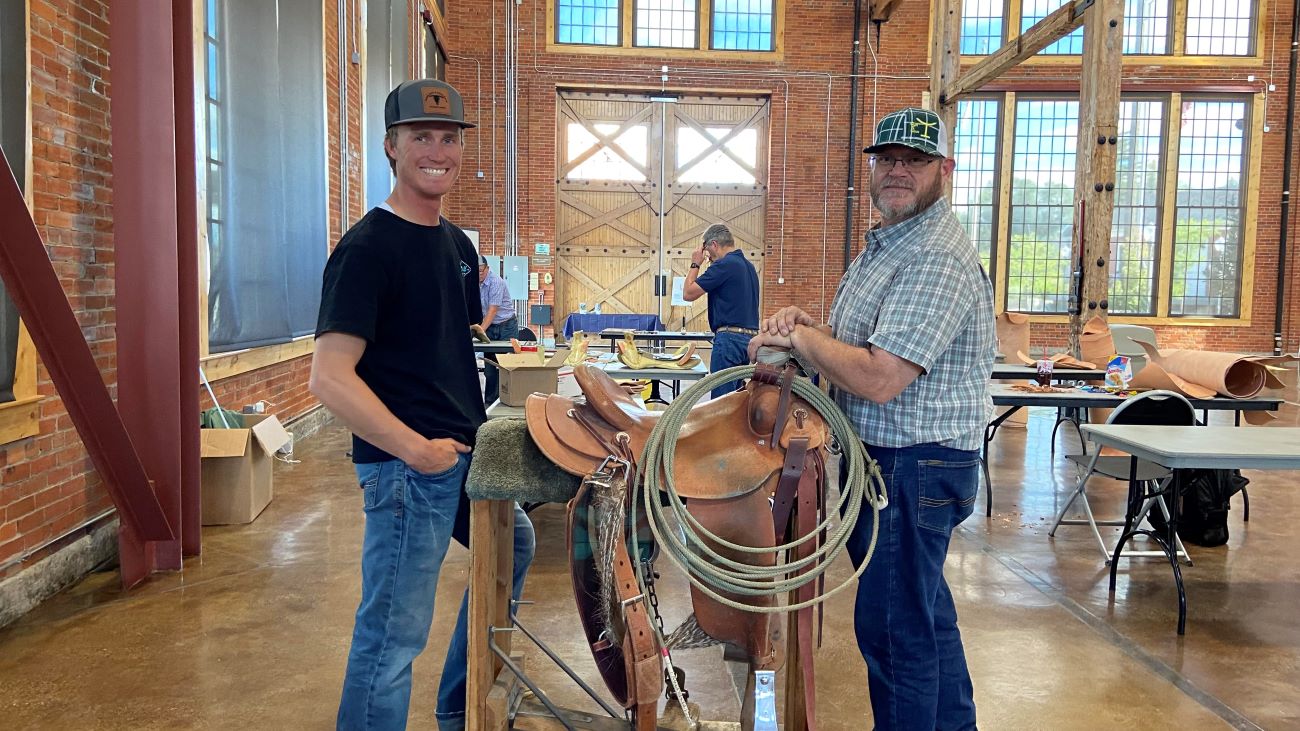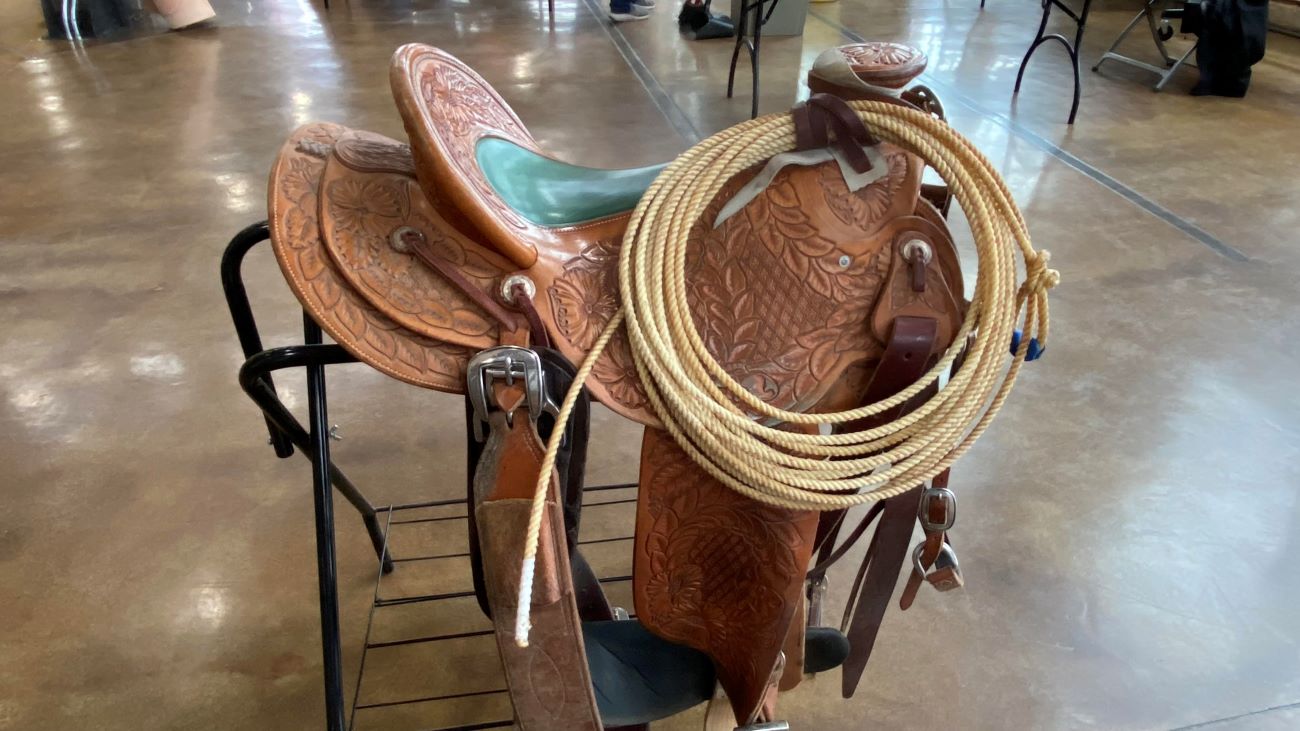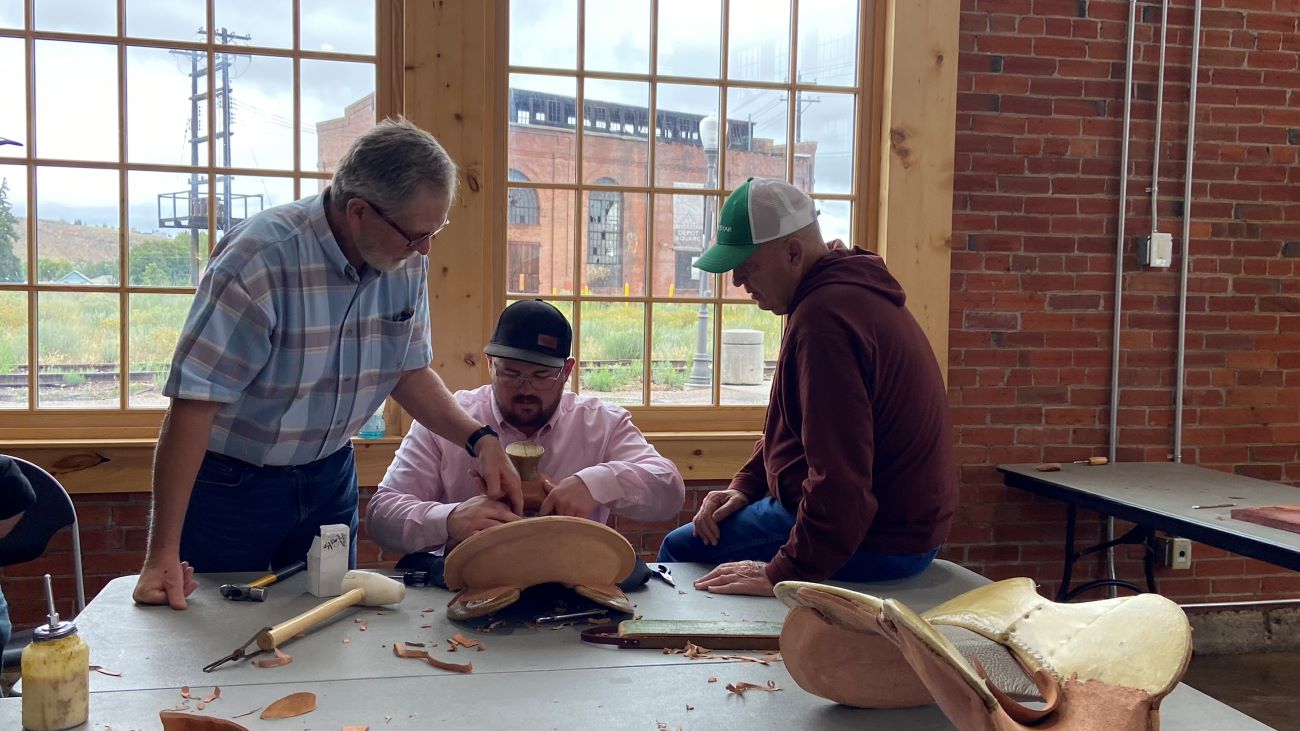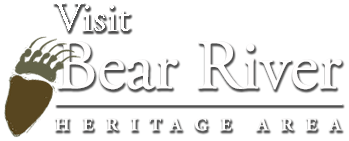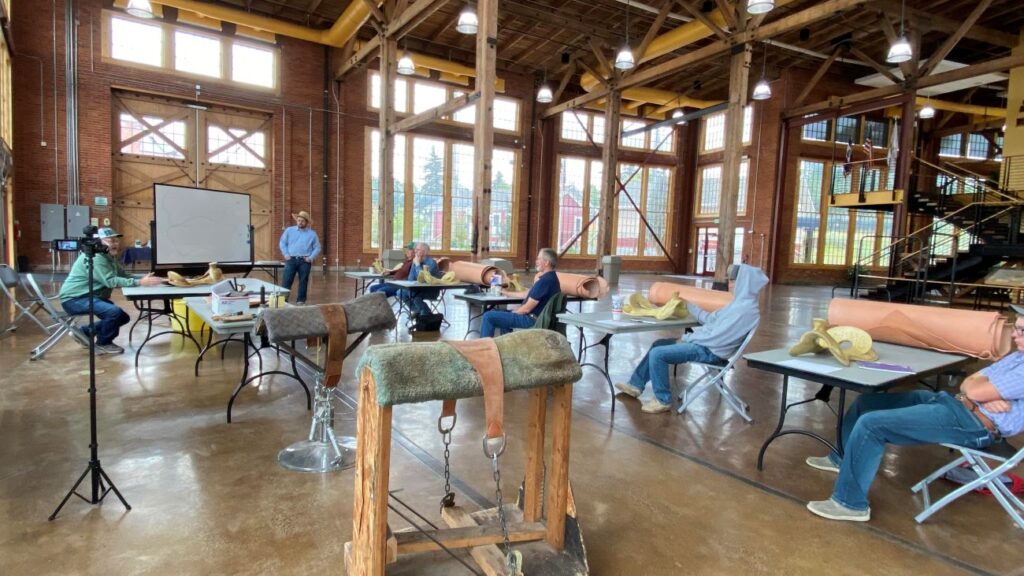On Labor Day weekend 2023, five students came together in Evanston, Wyoming, to learn the art of saddle making. Sponsored by the Wyoming Cultural Trust Fund in conjunction with the Culture Conservation Corps and the Bear River Heritage Area, this three-day symposium focused on providing supplies and knowledge to local saddle makers.
The instructors for this symposium were Clay and Josh Nicholas, a father-son duo from Bear River, Wyoming. Clay is a custom saddle maker who originally worked in Corinne, Utah, and learned saddle making from various makers in Utah.


Left: Clay demonstrating a technique for a student.
Right: Josh observing a student’s work.
Over the years, Clay has made over 400 saddles that have been sent all over the world. His son, Josh, learned saddle making from his father and is continuing the tradition with his business Box Car Saddlery. The two are skilled not only in saddle making but in leatherworking as well. They serve as mentors for many saddle makers in their local community.
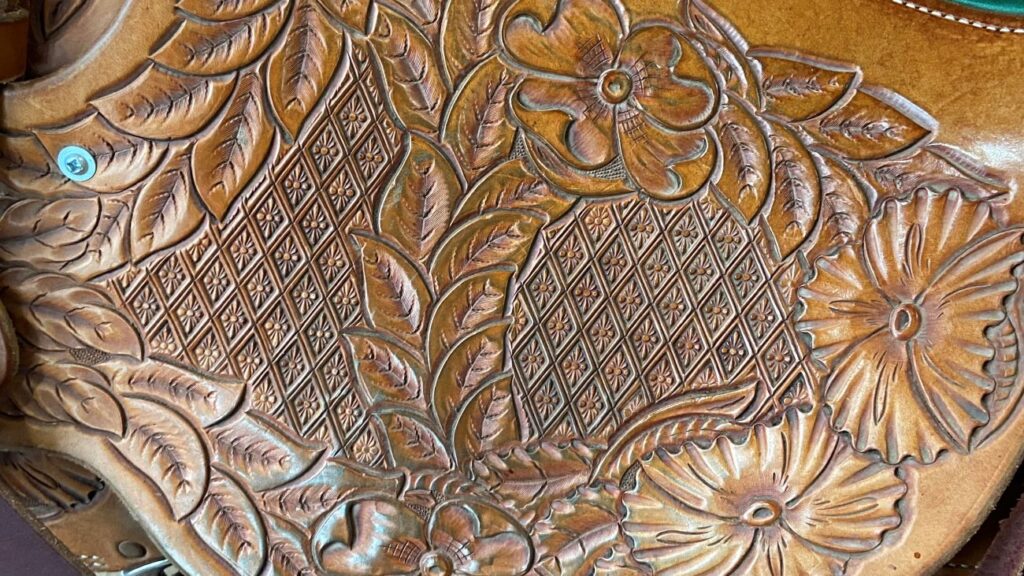
Clay’s leatherwork from one of his completed saddles.
Five students (Roy Andreasen, Jack Forsberg, Richard Shetler, Gavin McClain, and Lane Martin) participated in the workshop. Starting with nothing but a saddle tree (the foundation of a saddle made from rawhide) the students learned to shape and work the leather. Jack Forsberg from Garland, Utah, stated that his favorite thing about the symposium was “having someone with some expertise help you. Anyone can build a saddle, but the finished product is decided by all the little things that go into the process.” A few of the students also commented that while they were not new to saddle making, Clay’s process and tips will be helpful in the future.

Richard Shetler working on his saddle.
When asked about what he learned from the symposium, Richard Shetler from Bear River, Wyoming, commented that he “picked up several new tips that are new things to use and new ways of doing it [saddle making].” While they made great strides during the workshop, the students will need to finish their saddles on their own.
“Anyone can build a saddle, but the finished product is decided by all the little things that go into the process.”
Jack Forsberg
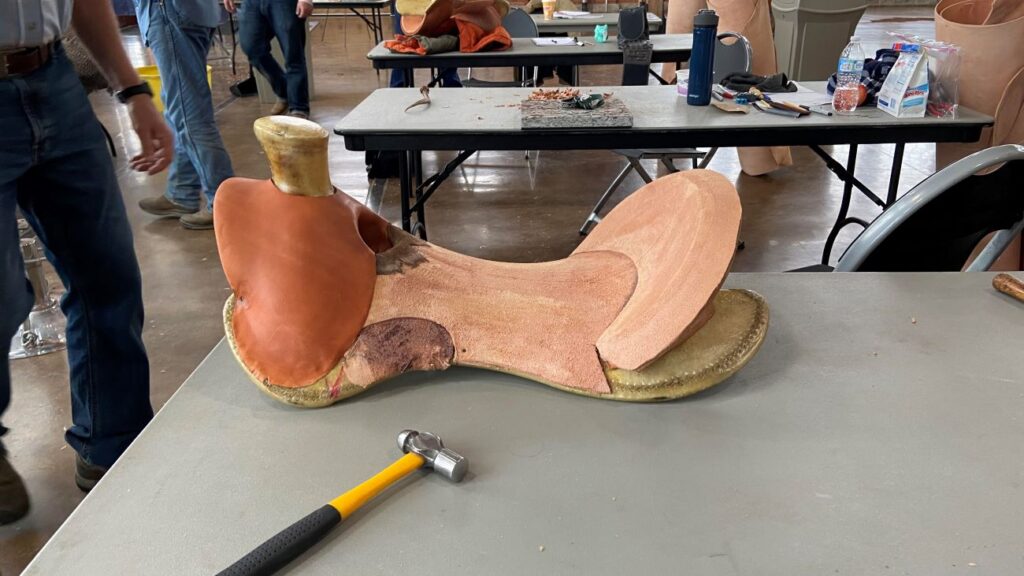
An example of a saddle in progress.
Lane Martin from Evanston, Wyoming, was the youngest participant at 14 years old. Lane has assisted his grandfather in making saddles before, but he has never made one on his own. Lane said that during the workshop, he was able to learn many different skills. He said “It’s been easier because I could do it myself this time. I don’t have somebody by my side, so I’ve learned a lot more doing it by myself.” In order for Lane to continue his study and apprenticeship in saddle making, he received a $500.00 scholarship from the symposium.

Lane testing out his saddle.
This workshop was held at the beautiful and historic Roundhouse in Evanston, Wyoming. Built in 1914, the Roundhouse and Railyards is listed on the National Register of Historic Places, and, after extensive renovation, now houses community and private events. This historic building offered ample space and a rustic atmosphere for the Saddle Making Symposium.

The historic Roundhouse building.
The purpose of the symposium was to pass on knowledge of saddle making to future generations and to preserve a Western American artform. As with any folk art, saddle making is a skill that will continue to develop and grow as it is passed down from tradition bearers like Clay and Josh. Just as Clay learned from different saddle makers, he is now passing on that knowledge to his son and others. The skills learned in this symposium will go on to assist not only the students but the community in sustaining Western traditions and culture as well as providing future economic opportunities.

Many of the students expressed their gratitude and support for the workshop and wished to thank the Wyoming Cultural Trust Fund and the Culture Conservation Corps for this opportunity. This project was supported in part by a grant from the Wyoming Cultural Trust Fund, a program of the Department of State Parks and Cultural Resources.
Story and photos by Emma George, the Heritage and Folk Art Coordinator for the Bear River Heritage Area.
Check out these additional photos in the gallery!

